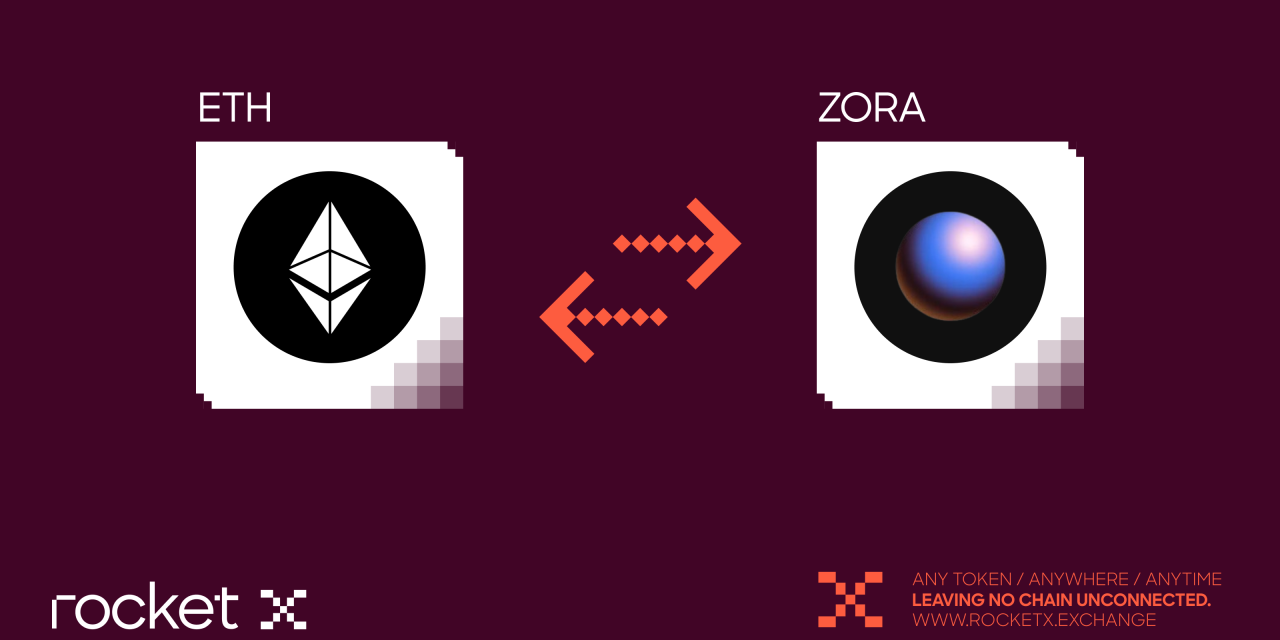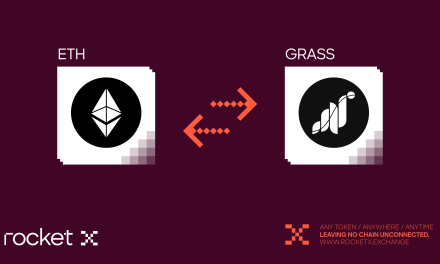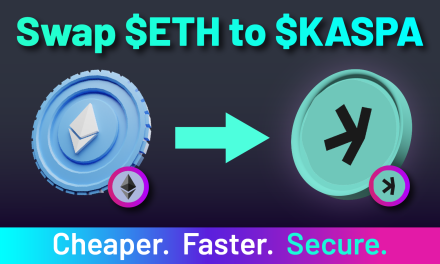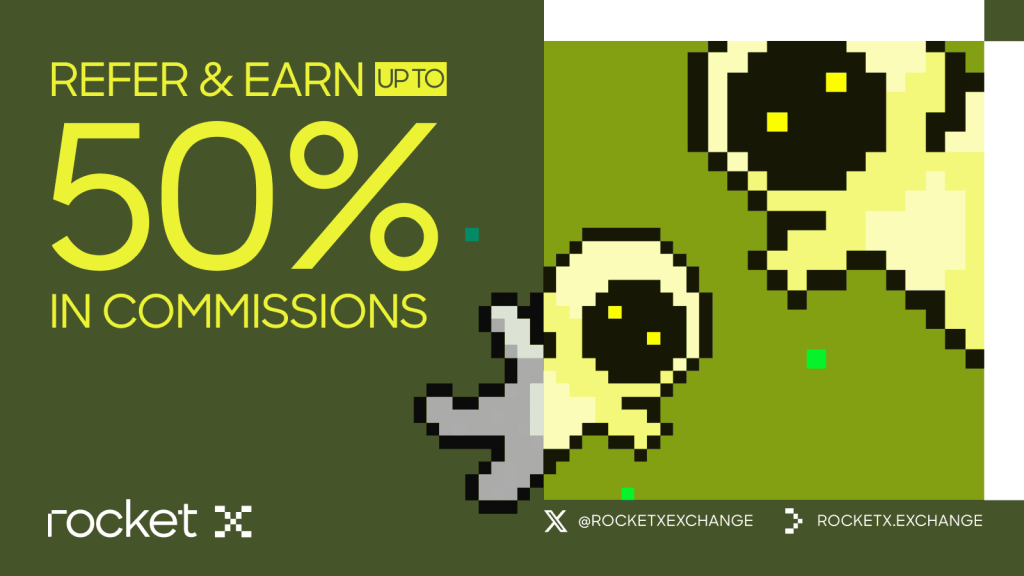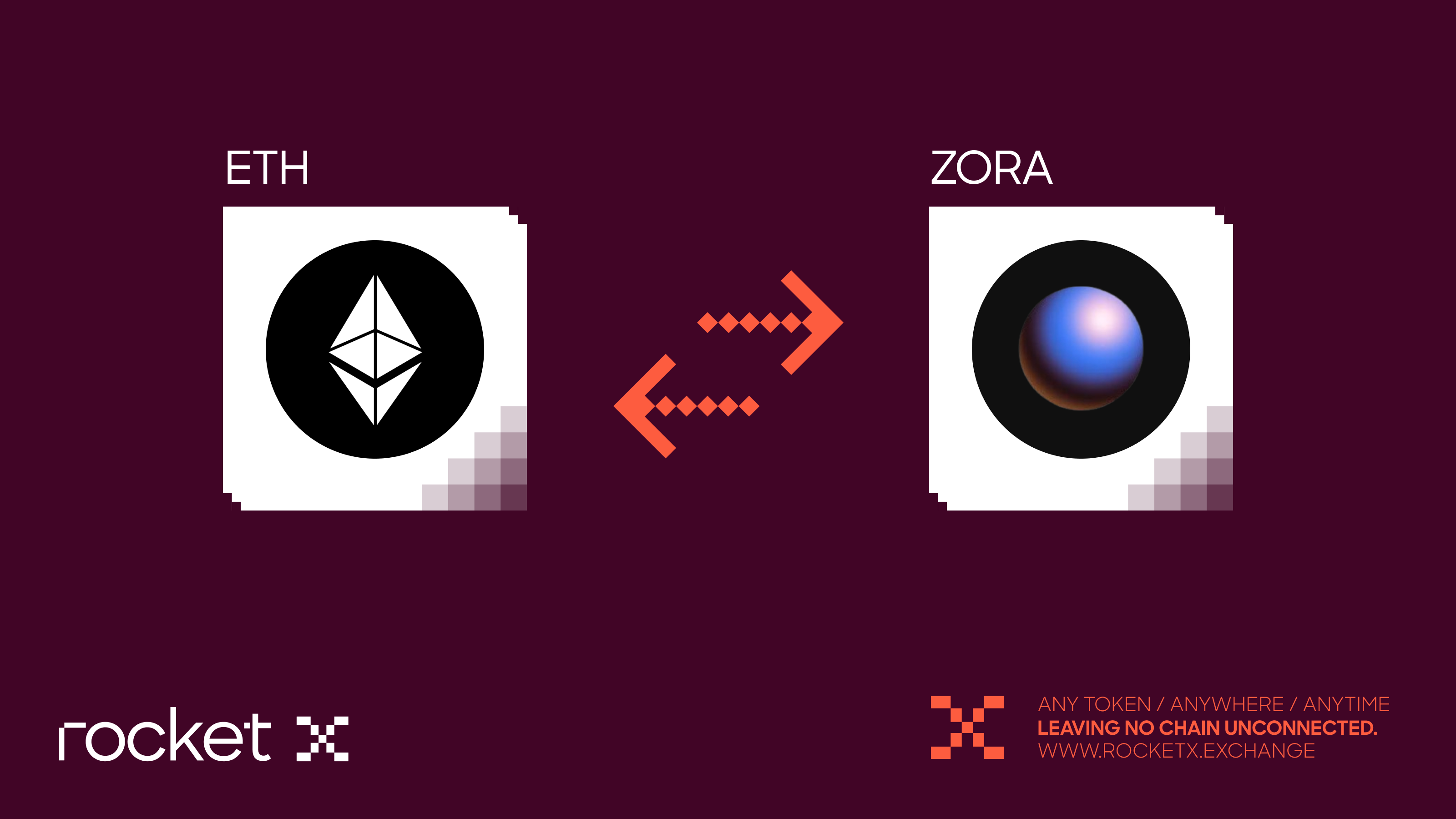
Introduction
In an age where digital ownership, content monetization, and creator empowerment are redefining value on-chain, a new Layer 2 has emerged as a bold answer. From turning viral tweets into ERC-20 tokens to enabling permissionless NFT creation for under $0.50, this platform is becoming the cultural infrastructure Web3 didn’t know it needed—but now can’t ignore.
Built to put creators at the center of the decentralized web, it offers ultra-low gas fees, seamless NFT minting, and a vibrant SocialFi ecosystem where every post has the potential to become a tradable token.
In this guide, we’ll walk you through everything you need to know about the Zora Network—what it is, how it works, its native $ZORA token, airdrop details, bridging process using RocketX, and the reasons behind its sudden surge in popularity. Whether you’re a creator, collector, or curious user, this article will help you understand why this rising Layer 2 deserves your attention
What is Zora Network?
Zora Network is a Layer 2 blockchain built on top of Ethereum—but it’s far from just another scalability solution. Launched in June 2023, the protocol was created with a clear mission: to empower creators in the Web3 era. While most L2s focus heavily on DeFi and transaction throughput, this one stands out by putting artists, developers, meme-makers, and storytellers at the very heart of its design.
Built on the OP Stack—Optimism’s open-source modular framework—it delivers fast, cost-efficient transactions. But what truly sets it apart is its cultural DNA. This isn’t just infrastructure for smart contracts; it’s a foundation for creativity. On this platform, you can mint NFTs for under $0.50, tokenize your content, and even turn posts into tradable ERC-20 tokens. It’s a full-fledged SocialFi layer where attention becomes ownership, and engagement turns into value.
Co-founded by Jacob Horne and Tyson Battistella, both former Coinbase visionaries, the project started in 2021 as a decentralized NFT marketplace helping creators capture resale value. As the ecosystem evolved, so did its ambition. Launching its own Layer 2 network allowed it to remove the high gas barriers and give creators the tools to fully own their digital presence.
Today, it’s more than a chain—it’s a movement. A place where art, memes, music, and ideas exist on-chain. Every piece of content becomes potential value. Every user becomes a contributor to the culture.
It’s not following trends—it’s setting them. And for anyone drawn to the creator-powered side of Web3, this network is where it all begins.
How Zora Works: A Creator-First Blockchain
What makes this network truly creator-first isn’t just its speed or affordability—it’s the way it reimagines how digital culture is minted, owned, and traded. Here, creators can mint NFTs for a fraction of the cost compared to the Ethereum mainnet, often under $0.50. That drastically lowers the barrier for independent artists, musicians, and meme-makers to put their work on-chain without needing deep pockets or technical expertise.
One of the most powerful innovations is its built-in SocialFi layer. Every piece of content—a post, a meme, a moment—can be turned into its own ERC-20 token with a fixed supply. The creator receives an initial allocation, and the rest becomes tradable through decentralized liquidity pools. This flips the traditional monetization model on its head—turning attention into value and culture into an asset class. Instead of relying on external platforms, creators now control the economic layer of their content directly.
Understanding the $ZORA Token: Utility and Tokenomics
The $ZORA token, launched on April 23, 2025, on the Base network, is the native currency of the Zora ecosystem. But it’s not your typical utility or governance token. In fact, it proudly positions itself as a “fun” token—a memecoin with a purpose, meant to drive participation and fuel creator economies, without governance rights or equity implications.
It is used to tip creators, buy post coins, and unlock premium experiences across the Zora platform. This aligns with the protocol’s mission of decentralizing cultural value and giving creators the tools to monetize attention directly.
The tokenomics are straightforward. Out of the 10 billion total supply, only 35% was allocated to the broader community: 10% for airdrops, 20% for ecosystem incentives, and 5% for liquidity provisioning on exchanges like Binance and Coinbase. The remaining 65% went to the insiders—20% to the treasury, 18.9% to team members, and 26.1% to investors—all subject to 6-month cliffs and long-term vesting schedules.
$ZORA Airdrop: Rewarding the Real Creators of Web3
The $ZORA airdrop was one of the most anticipated events in the creator economy space—and for good reason. Unlike typical DeFi airdrops aimed at whales and volume traders, Zora’s approach was focused on rewarding real users, early creators, collectors, and contributors who had meaningfully engaged with the ecosystem.
A total of 1 billion $ZORA tokens—10% of the total supply—were distributed to 2,415,024 wallets, making it one of the largest airdrops by reach. There was no lockup, no need to stake or bridge, and no unnecessary steps. If you had created, collected, or contributed on Zora between 2020 and early 2025, chances were good you had something waiting.
The community response was electric. Social platforms lit up as creators discovered airdropped balances—some modest, others surprisingly generous. While the average user received around 1,571 tokens (roughly $37 at mid-range post-launch pricing), a few top wallets claimed significantly higher amounts. As expected, this sparked debate about distribution fairness, especially given the 65% insider allocation noted in tokenomics critiques.
Still, the airdrop succeeded in its main goal: it galvanized the community, rewarded genuine participation, and brought widespread visibility to the newly launched $ZORA token. It wasn’t just free money—it was an invitation to help shape the next chapter of on-chain culture.
How to Bridge to the Zora Network Using RocketX
Looking to explore Zora’s vibrant creator ecosystem? Whether you want to mint NFTs, collect post coins, or join the SocialFi movement, the first step is getting your assets onto the Zora Network. And with RocketX, it’s never been easier.
RocketX supports nearly 200 blockchains, allowing you to bridge to Zora from major networks like Ethereum, BNB Chain, Polygon, Base, Solana, and more—in just one smooth transaction.
Here’s how to bridge to Zora Network using RocketX:
- Visit RocketX Exchange
Go to app.rocketx.exchange in your browser. - Connect Your Wallet
Click “Connect Wallet” and select your preferred option (MetaMask, WalletConnect, etc.).
Ensure your wallet has enough tokens and gas for the transaction. - Select Networks and Choose the Token to Bridge
From the Source Network dropdown, select the blockchain where your assets are currently held—like Ethereum, Polygon, or Arbitrum.
Then, set Zora Network as your Destination Network.
Next, choose the token you want to bridge. RocketX supports a wide range of assets from both established and emerging chains. Pick a supported token such as ETH, USDC, or USDT to continue.
4. Enter the Amount
Type in how much you want to bridge. RocketX automatically finds the best route and lowest fee from over 500+ liquidity sources and bridges.
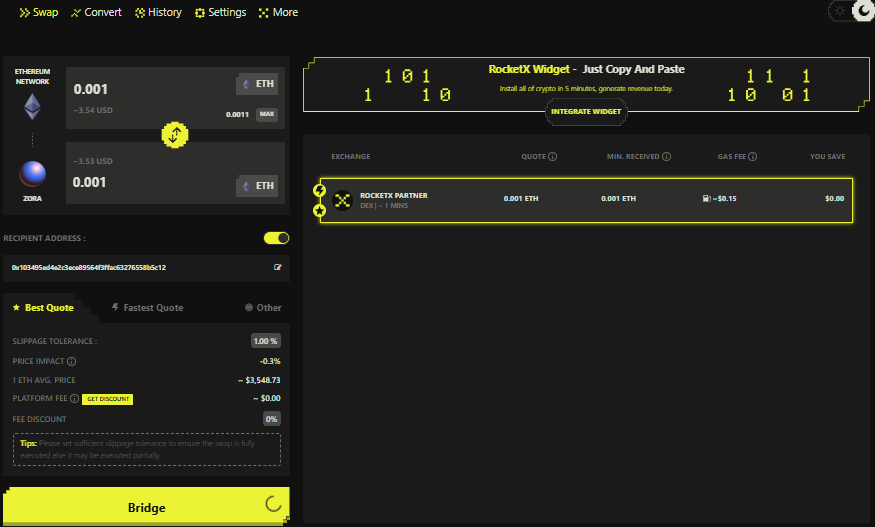
5. Review and Confirm
Check all the details: token, amount, networks, estimated time, and fees. When everything looks good, click “Bridge”.
6. Approve in Your Wallet
Confirm the transaction in your wallet. After approval, your tokens will be securely transferred to Zora Network—usually within a few minutes.
That’s it. With RocketX, you don’t need to worry about switching between bridges, verifying smart contracts, or navigating complex UI flows. You just connect, choose, and go—from any chain, to Zora, in a few clicks.
Future Potential of Zora
Zora isn’t just building a blockchain—it’s shaping a new digital culture. As the creator economy shifts on-chain, it is positioning itself as the go-to infrastructure for artists, builders, and communities who want to own their work and monetize their influence in entirely new ways. Its unique SocialFi model, where every post can become a tradable token, is redefining how value flows through content.
The momentum is already showing. In recent weeks, Zora has seen an 89% surge in token creation activity, driven by its viral “post coins” feature and the simplicity of minting. This explosive growth isn’t just speculative hype—it’s proof that creators are embracing Zora as a platform where ideas, memes, and moments can instantly become liquid markets. More than two million users have already joined the network, and over $27 million has been distributed to creators through secondary sales.
Zora made a strategic decision to launch the $ZORA token on Base instead of its own chain. This move connected the protocol to one of the fastest-growing L2 ecosystems, expanding reach, liquidity, and visibility overnight. Integrations with platforms like Farcaster, Lens Protocol, and OpenSea have further strengthened its position at the intersection of Web3 social and NFT infrastructure.
Zora is also actively expanding its ecosystem with new partnerships, developer grants, and even exploring AI integrations. With backing from top investors like Paradigm, Coinbase Ventures, and Haun Ventures, it has both the funding and the vision to scale globally.
As Web3 moves toward mass adoption, one thing is clear: blockchains that empower creators, not just traders, will lead the way. And Zora is already becoming the cultural Layer 2 that bridges content and capital in a way no other network does.
Conclusion
Zora Network is more than just another Ethereum Layer 2—it’s a bold reimagining of how culture, content, and value can live on-chain. By empowering creators to tokenize their work, monetize attention, and build communities without barriers, Zora is laying the foundation for a new kind of internet—one where creativity is currency.
Its rapid rise isn’t a coincidence. From post-based tokenization to low-cost NFT minting and seamless integrations with Base and Farcaster, Zora is ticking all the right boxes for long-term relevance in the creator economy. And as interest continues to grow, accessibility becomes the key.
As Web3 continues to evolve, the platforms that blend creativity, usability, and community will lead the next wave. Zora is one of them. And RocketX is your gateway there.

